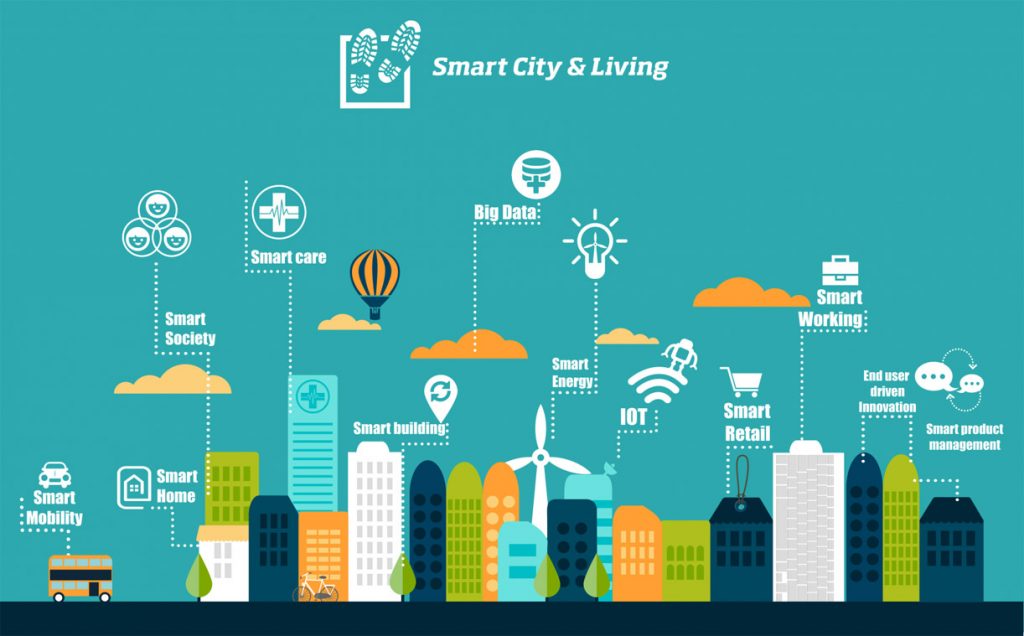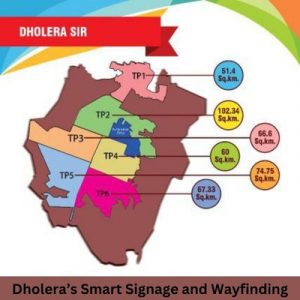The Internet of Things (IoT) has revolutionized resource management and how humans interact with technology, changing several industries. Creating smart cities is one of the most ambitious uses of IoT. One of the most prominent instances globally is Dholera, a town in the Indian state of Gujarat that aims to become the country’s first and biggest greenfield smart city. This blog examines how Dholera’s infrastructure is enhanced by IoT, making it more livable, sustainable, and efficient.
Mirrikh Infratech is a real estate company based in Surat city, dedicated to helping individuals and businesses realize their dreams of owning a piece of the futuristic Dholera, Ahmedabad.
We have helped investors diversify their portfolios by offering a new way to invest in the vibrant Dholera. With more than a decade of experience, we offer exceptional solutions that meet our customers’ unique needs and goals. Opportunity to Live in a Smart City and own land here with a minimum investment.Generating Maximum benefit for a minimum investment.
Educating and spreading awareness about the wonderful opportunity to invest & giving a chance to live a better lifestyle for future generations.
By choosing locations of projects suitable for future growth, Projects in Residential, Industrial & Commercial Category, Mirrikh Infratech has completed over 8 projects in Dholera, currently, 2 projects are ongoing. In this period, the company has created a massive land bank, helping in making a foundation to launch projects in the future continuously Dholera.
The Delhi-Mumbai Industrial Corridor (DMIC) project includes the Dholera Special Investment Region (DSIR), which aims to establish a hub for international trade and industry. Dholera, which covers an area of more than 920 square kilometers, is intended to be a high-tech, sustainable metropolitan region with integrated smart city elements and cutting-edge infrastructure.
The Basis of an Intelligent City
Utilizing digital technology, a smart city lowers expenses and resource consumption throughout its infrastructure while improving performance and well-being. To manage the city’s assets more effectively, a variety of IoT-enabled systems must be integrated, including trash management, law enforcement, power plants, water supply networks, traffic and transportation systems, and other community services.
IoT in Development and Urban Planning
Astute Management
IoT is at the heart of Dholera’s infrastructure, which uses sensors and networked devices to monitor and control a range of city operations. Smart grids, for example, balance supply and demand, reduce power interruptions, and include renewable energy sources to ensure efficient distribution of energy. Real-time data on energy consumption is provided by smart meter installation in homes and companies, assisting citizens and government agencies in optimizing use and minimizing waste.
Water Resources Management
An important resource is water, and Dholera’s Internet of Things-enabled water management system is a prime example of how technology can guarantee sustainable use. To stop water loss, smart water meters and sensors track water flow, look for leaks, and offer data analytics. IoT is used by advanced treatment plants to regulate and optimize the purification process, guaranteeing inhabitants receive clean water while cutting operating expenses.
Management of Wastes
Effective waste management is essential to preserving sustainability and hygienic conditions in cities. Dholera tracks fill levels with sensor-equipped, Internet of Things-enabled smart bins. By optimizing collection routes and timetables, cutting fuel consumption, and limiting their environmental impact, these bins transmit signals when they need to be emptied.
Internet of Things in Transportation
Sensible Traffic Control
The transportation network of Dholera is planned to be sustainable and intelligent. Thanks to the real-time data collection from sensors implanted in roads and vehicles, the Internet of Things is essential to traffic control. This data aids in dynamic traffic signal management, congestion reduction, and traffic flow monitoring. Furthermore, intelligent parking systems direct cars to open spaces, cutting down on the amount of time spent looking for a place to park and thereby minimizing emissions from moving cars.
Public Transportation
IoT improves Dholera’s public transportation by allowing for real-time rail and bus tracking, facilitating effective route planning, and reducing passenger wait times. By eliminating the need for paper tickets and streamlining the commuter process, smart ticketing solutions improve convenience and operational effectiveness.
Smart Homes and Buildings
In Dholera, the Internet of Things turns houses and buildings into intelligent beings that improve the city’s overall efficiency. HVAC (heating, ventilation, and air conditioning) systems in smart buildings are controlled by Internet of Things (IoT) devices in response to occupancy and external factors. This greatly lowers energy usage while simultaneously improving comfort. Home automation systems offer a high degree of convenience and security by enabling users to remotely monitor security systems and operate appliances.
Improving Security and Safety for the Public
IoT has a significant effect on Dholera’s public safety. Public areas can be continuously monitored by smart surveillance systems that are equipped with linked cameras and sensors. These systems improve reaction times and lower crime rates by immediately alerting authorities to unexpected activity. IoT-enabled emergency response systems can also coordinate activities and quickly distribute information during disasters, ensuring effective management and minimizing damage.
Innovations in Healthcare
IoT provides enormous benefits to Dholera’s healthcare industry through telemedicine, remote patient monitoring, and smart medical devices. Real-time monitoring of patient’s vital signs via IoT-enabled wearables and sensors notifies medical professionals of any abnormalities. To manage chronic diseases and provide prompt interventions, which improve patient outcomes and lower healthcare costs, continuous monitoring is extremely helpful.
Sustainability and Environmental Monitoring
Environmental sustainability is a top priority for Dholera, and IoT is a key facilitator in this respect. Everywhere in the city, there are air quality monitors that track pollution levels and provide information to reduce and manage environmental risks. By optimizing irrigation, keeping an eye on weather patterns and soil moisture, and maintaining the well-being of urban vegetation, IoT also helps manage green spaces.
Obstacles and Things to Think About
Although Dholera’s IoT integration has many advantages, there are drawbacks as well. Because of the necessity to safeguard the massive amounts of data produced by IoT devices against cyberattacks, data privacy and security are of utmost importance. To prevent fragmentation and guarantee smooth functioning across several sectors, it is imperative to guarantee the interoperability of diverse IoT systems.
IoT infrastructure development and upkeep also call for both a substantial financial commitment and a high level of technological know-how. To properly handle these issues, a strong framework for data governance that includes guidelines for data ownership, access, and usage must be constructed.
Upcoming prospects
Dholera’s continuous transformation into a smart city offers other towns hoping to use IoT for urban development important insights and lessons. IoT capabilities will grow as technology advances, making even more advanced and effective municipal management solutions possible. Future smart cities should take a cue from Dholera’s success, which shows how IoT can make cities more resilient, sustainable, and habitable.
The Internet of Things’ role in Dholera serves as an example of how technology may revolutionize urban development. Through the integration of IoT into its infrastructure, Dholera is redefining global benchmarks for smart cities. IoT lies at the core of Dholera’s vision for a contemporary, efficient, and sustainable urban future, from better healthcare and environmental sustainability to increased public safety and resource management. The city is a monument to the ability of innovation to build the cities of the future, as it grows and changes even now.




